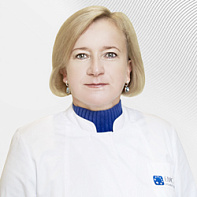The vessels of the brain are a complex system capable of self-regulation and maintenance of cerebral blood flow. Therefore, only comprehensive diagnostics, including ultrasound scanning, computed tomography, and magnetic resonance imaging, allows timely and accurate selection of treatment tactics and evaluation of its effectiveness. During ultrasound, the anatomy of blood vessels, the condition of the wall and lumen of the arteries are assessed and blood flow parameters are simultaneously determined using Dopplerography and color scanning, which makes it possible to obtain a more accurate picture of the condition of blood vessels. Ultrasound is used to diagnose atherosclerotic plaques, blood clots in the lumen, tortuosity and artery dissection.
The initial ultrasound sign of atherosclerosis is not a plaque, but a thickening of the carotid artery wall by a fraction of a millimeter. This indicator is necessarily determined by duplex scanning and is called the thickness of the intima-media complex (CIM). It is taken into account when evaluating the effectiveness of statin treatment and antihypertensive therapy. An increase in CMM of more than 1.0 mm is usually associated with risk factors for cardiovascular diseases: hypertension, diabetes mellitus, smoking, increased blood cholesterol, etc.
As the atherosclerotic process progresses, plaques form. Most often, plaques are localized in the carotid bifurcation, the site of the division of the common carotid artery into external and internal. Numerous clinical studies have proven that the presence of plaque in the carotid bifurcation is a significant risk factor for stroke, death, and myocardial infarction. That is why it is important to identify atherosclerotic changes in the arteries at an early stage. Duplex scanning determines not only the location of the plaque, but also its other characteristics that are important for choosing further treatment tactics: shape, size, structure, surface, and degree of narrowing (stenosis). If the lumen of the artery is completely closed, this is called occlusion.
When examining brachiocephalic arteries, arterial tortuosity associated with their elongation is quite common. The main causes of carotid artery tortuosity are high blood pressure and atherosclerosis. Tortuosity of the vertebral arteries is more often associated with deformity of the cervical spine, as these vessels pass through the canal of the transverse processes of the vertebrae. If the tortuosity of the artery leads to compression of the lumen, this can cause a violation of cerebral blood flow.
Ultrasound scanning, like other methods of radiation diagnostics (angiography, CT and MRI), is used in the examination of patients with traumatic vascular lesions, such as dissection, i.e. wall dissection. Artery wall dissection can also be spontaneous. The main symptom of dissection of the artery of the head and neck is a severe headache, which is not relieved by conventional painkillers.
Vasculitis is an inflammation of the vascular wall of an autoimmune or infectious nature. Duplex scanning is informative in the case of lesions of large and medium–sized arteries - carotid, vertebral or temporal arteries.
Indications for duplex scanning of brachiocephalic arteries are:
- headache;
- dizziness;
- fainting;
- high or low blood pressure;
- elevated blood cholesterol;
- impaired movement and sensitivity of the extremities;
- visual impairment.
The advantages of the method are:
- high information content;
- speed of execution;
- security (multiple execution capability for dynamic monitoring).
Due to its advantages, ultrasound duplex scanning of brachiocephalic arteries is recognized worldwide as one of the main methods of diagnosing vascular diseases. Ultrasound assessment of cerebral circulation, neurosonology, is a relatively new and rather complex field that requires a high level of training and clinical experience from a specialist.
At the European Medical Center, ultrasound duplex scanning of brachiocephalic arteries is performed using the most modern ultrasound systems that allow detecting the disease at an early stage, archiving the results and conducting a comparative analysis of their dynamics. BCA ultrasound is included in the programs of cardiological and neurological examination.








.jpg)


.jpg)
.jpg)
.jpg)
.jpg)


.jpg)


.jpg)


